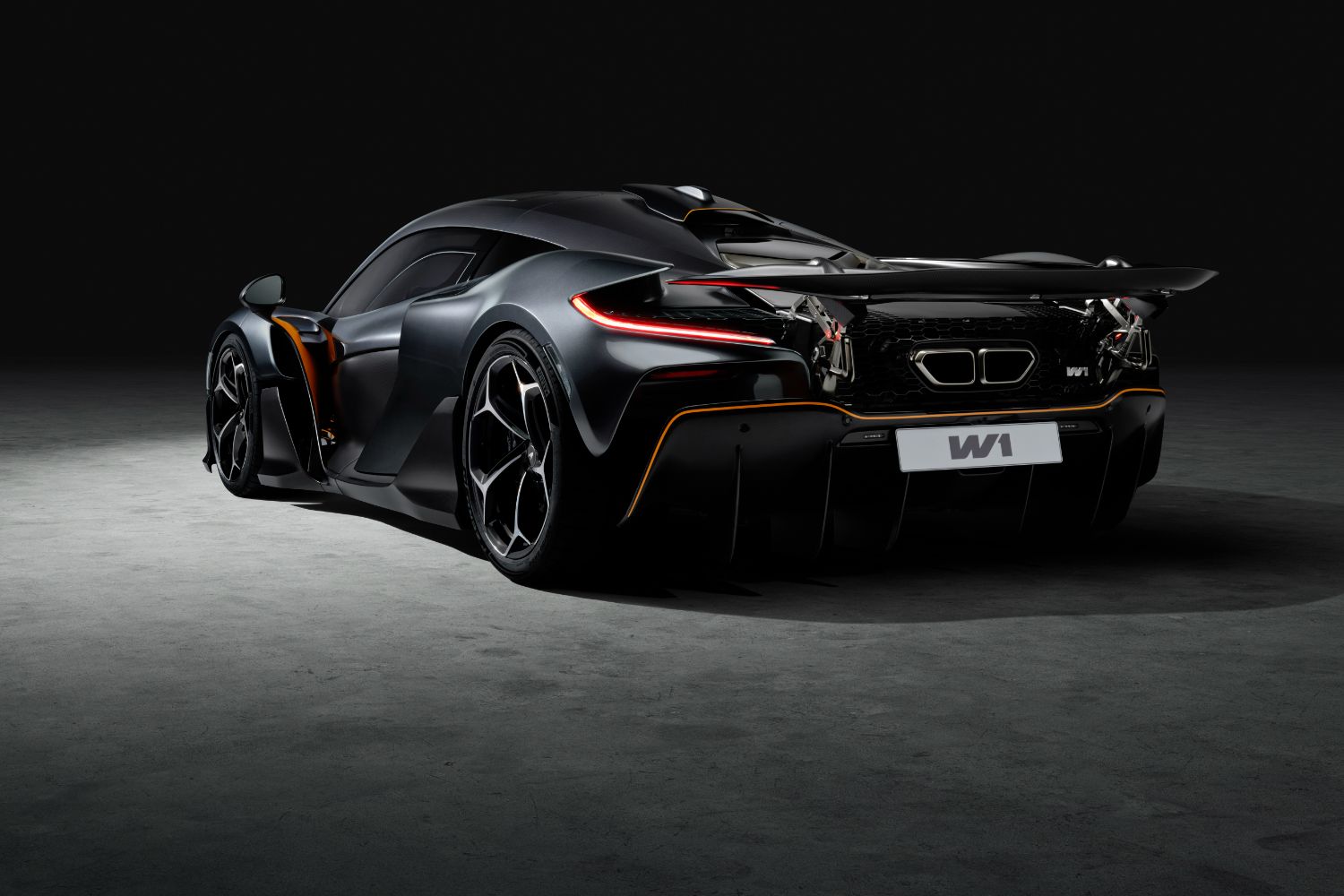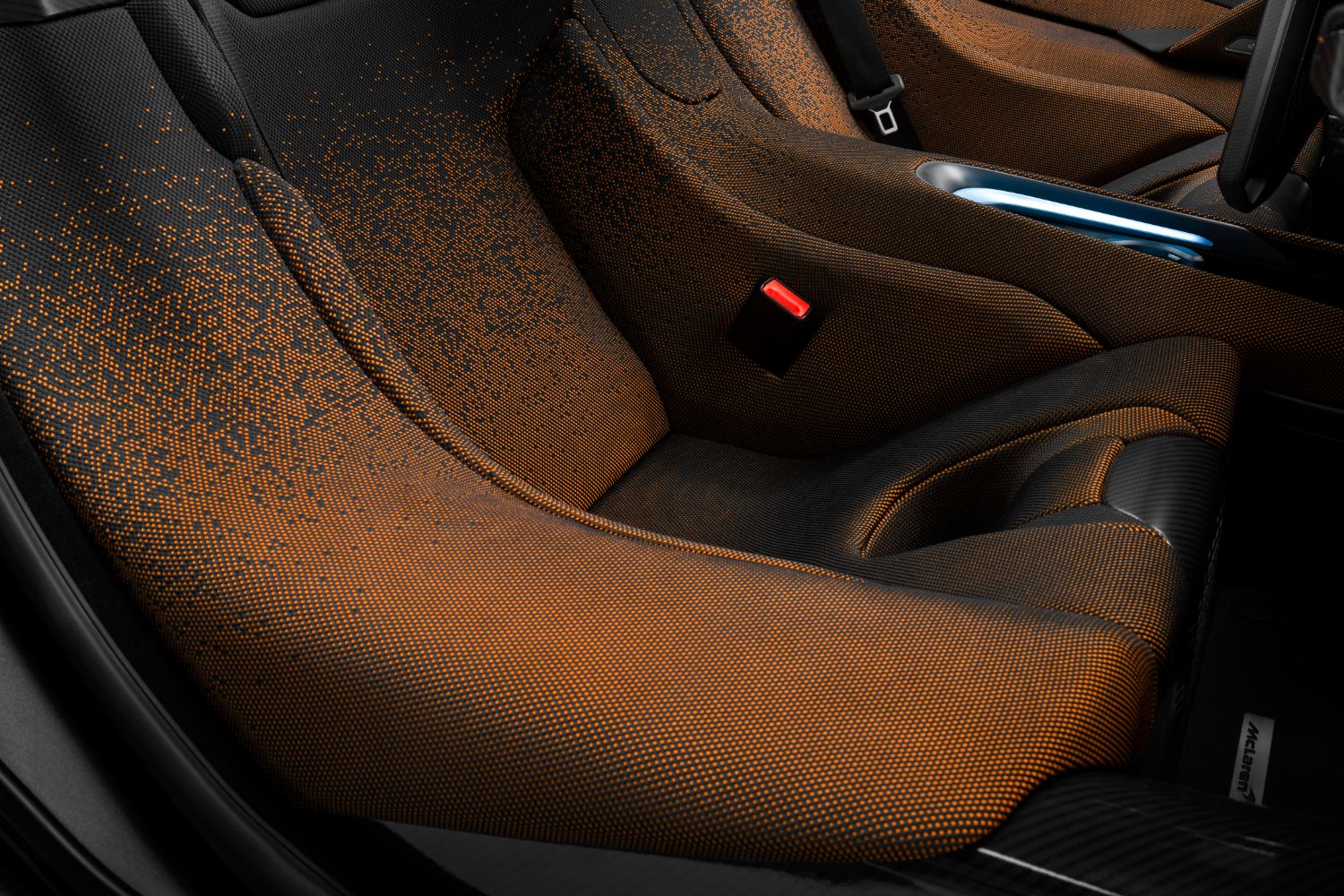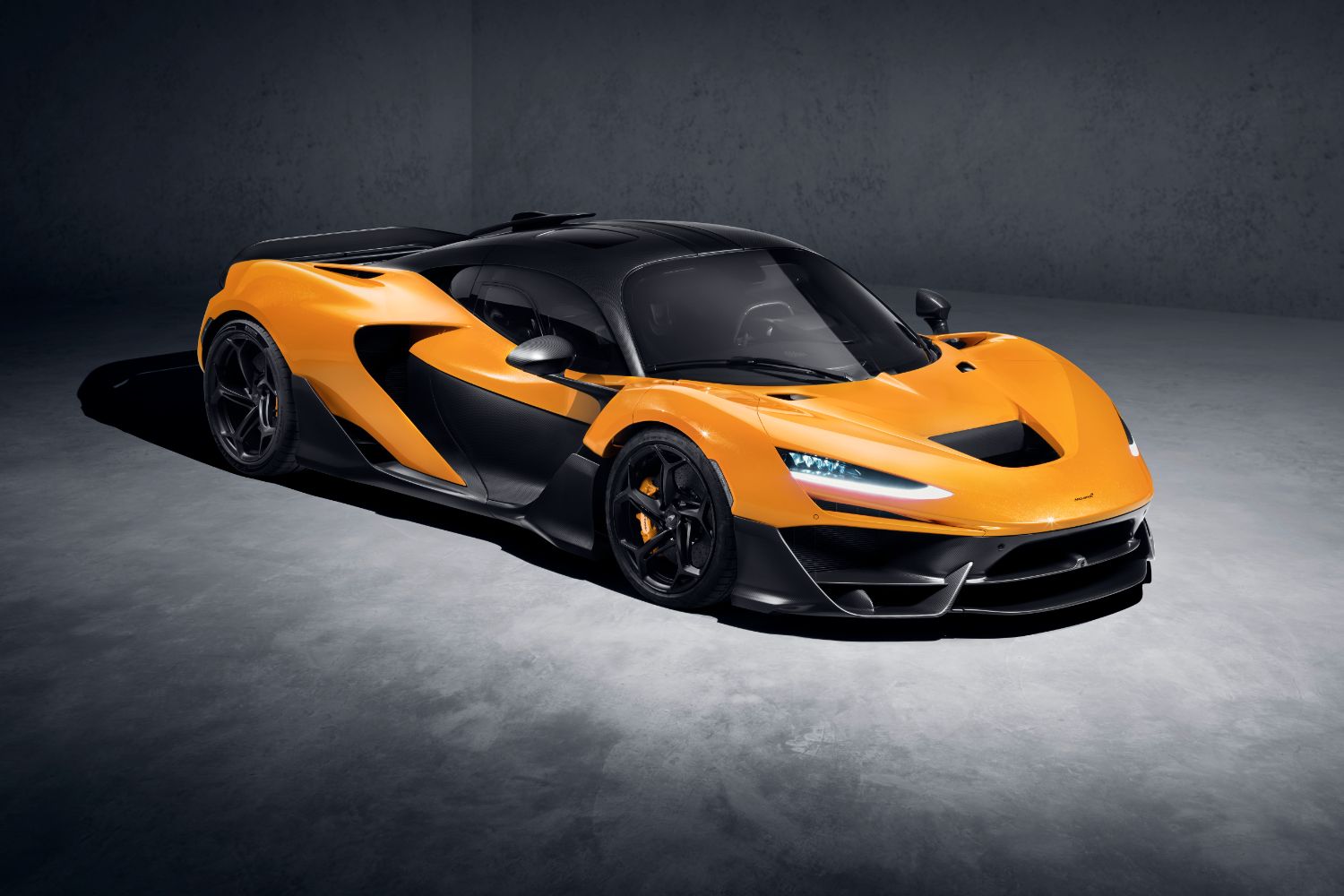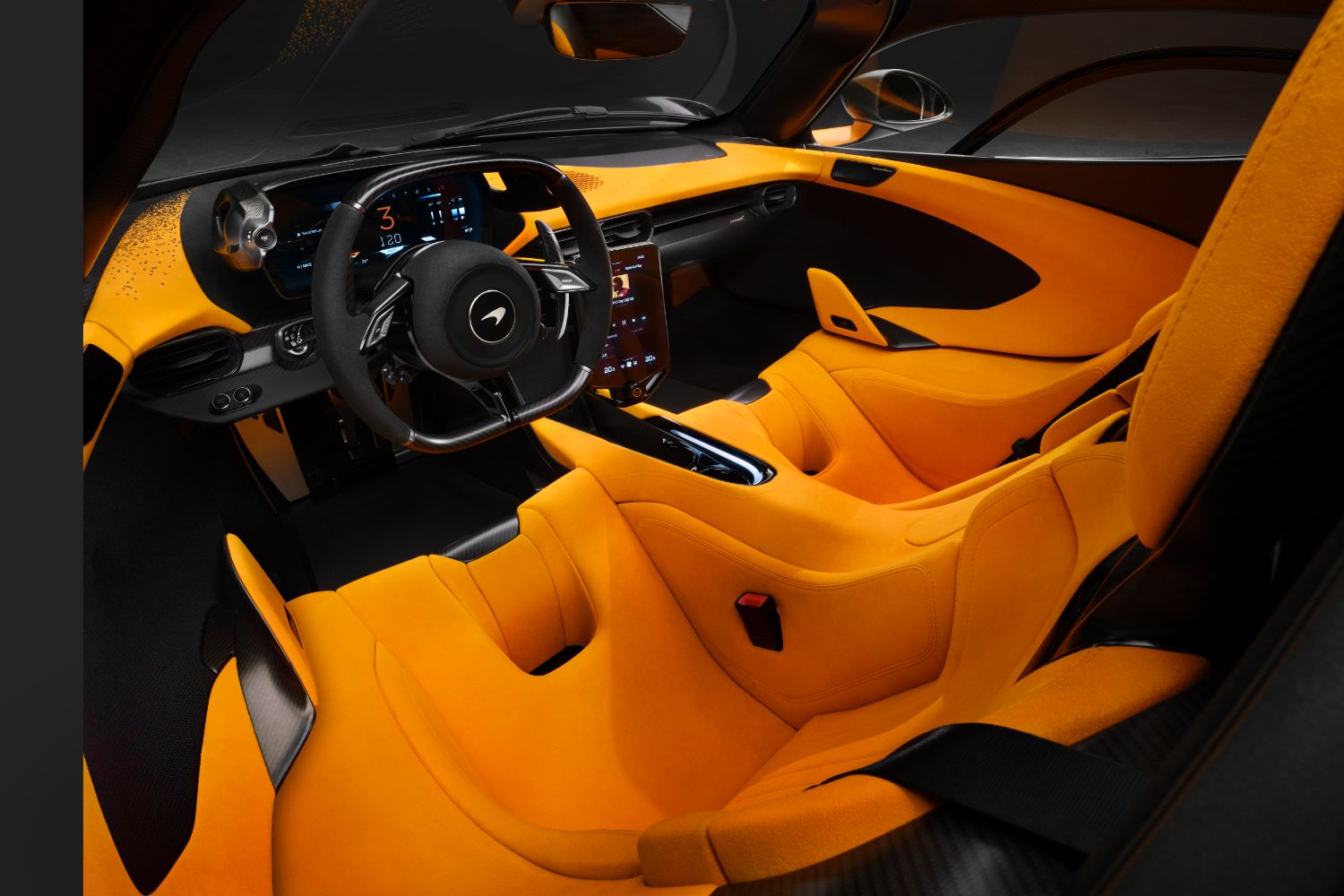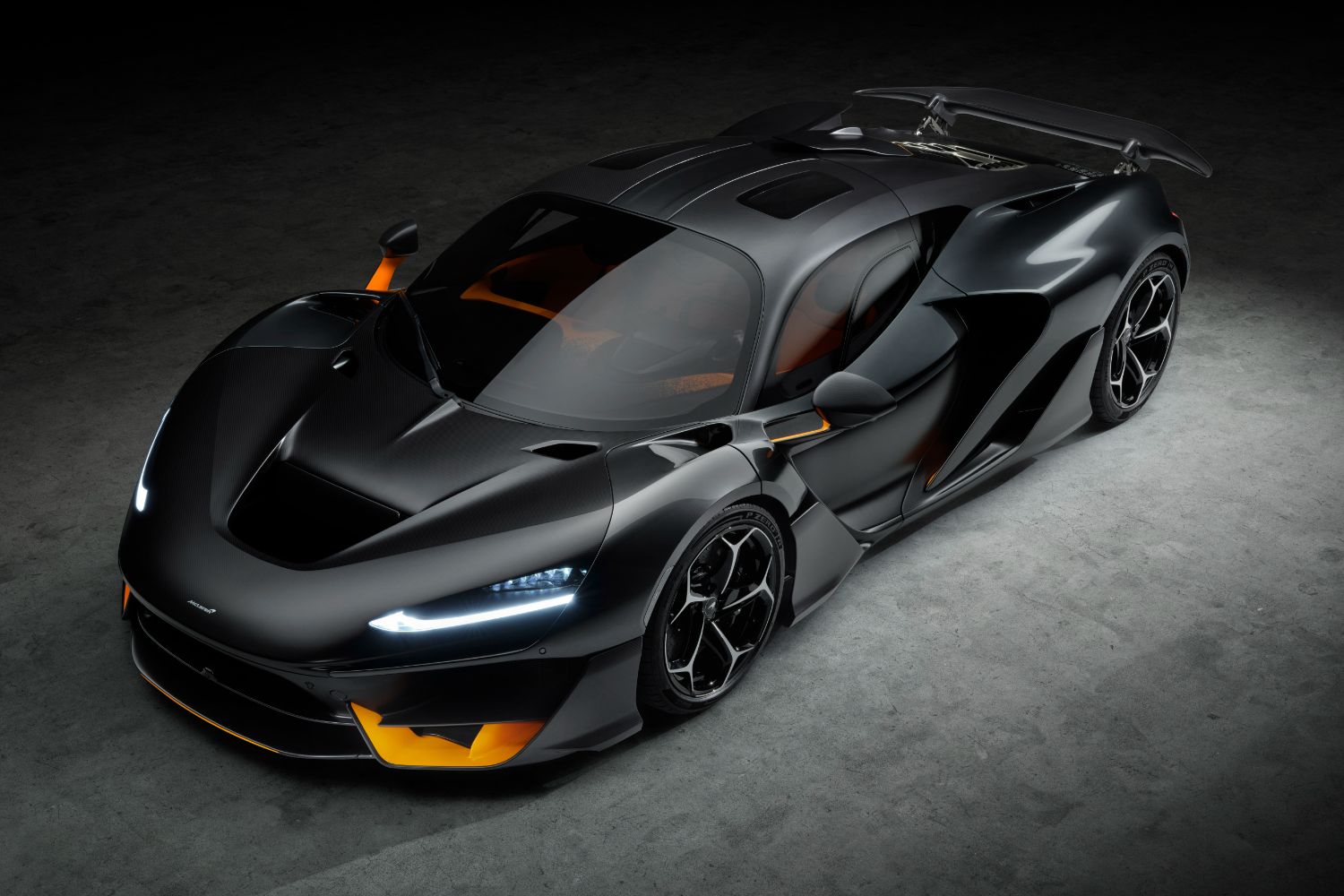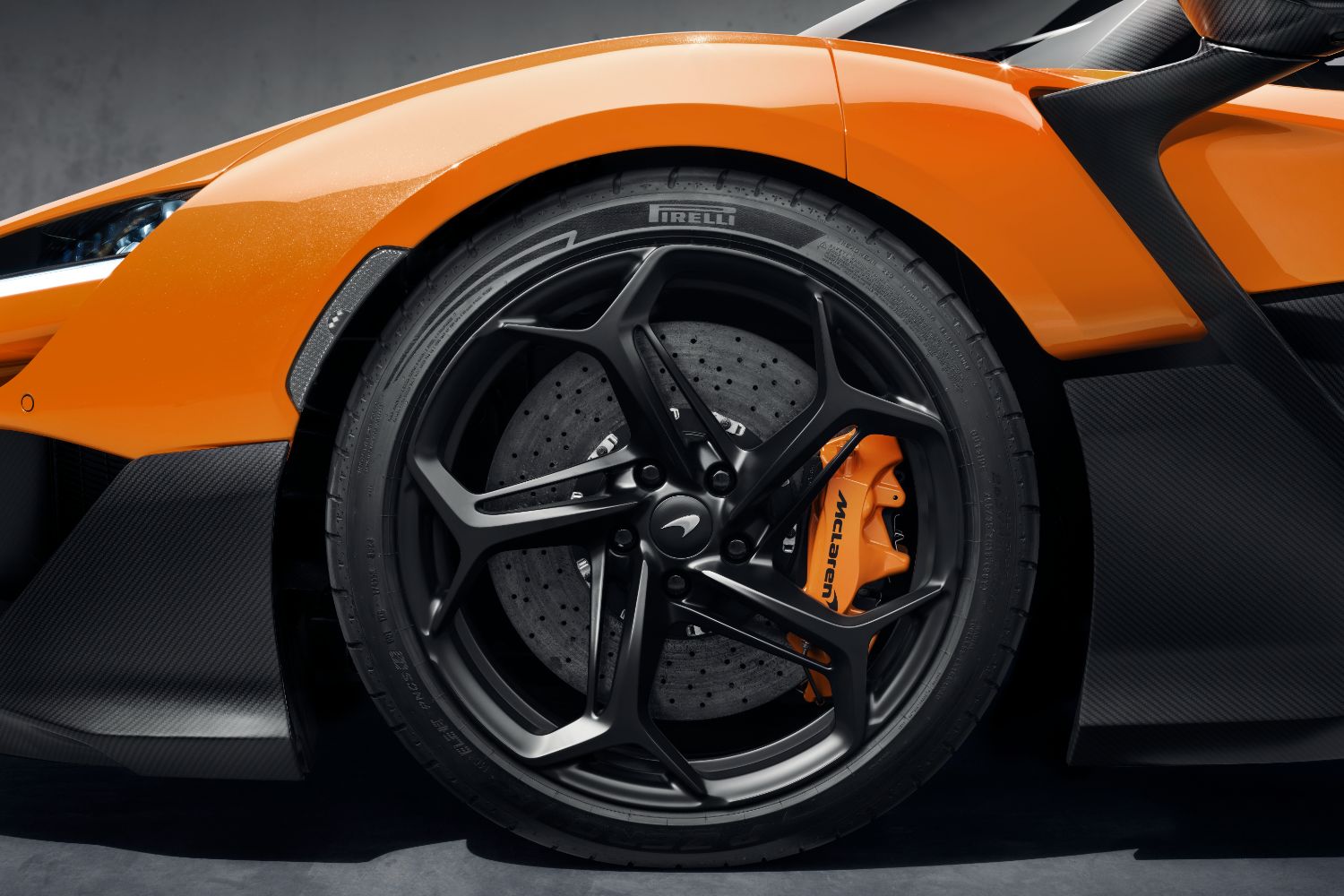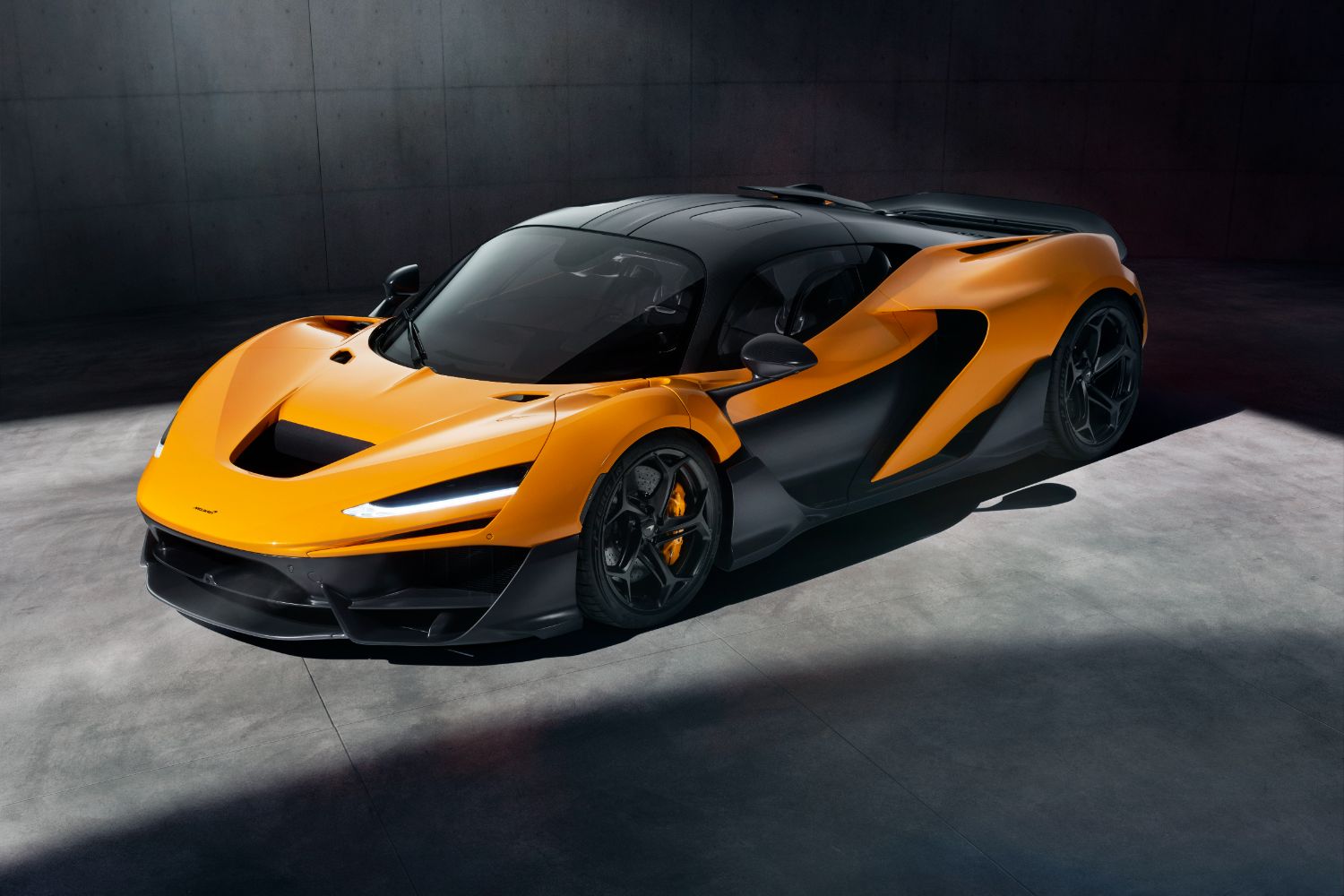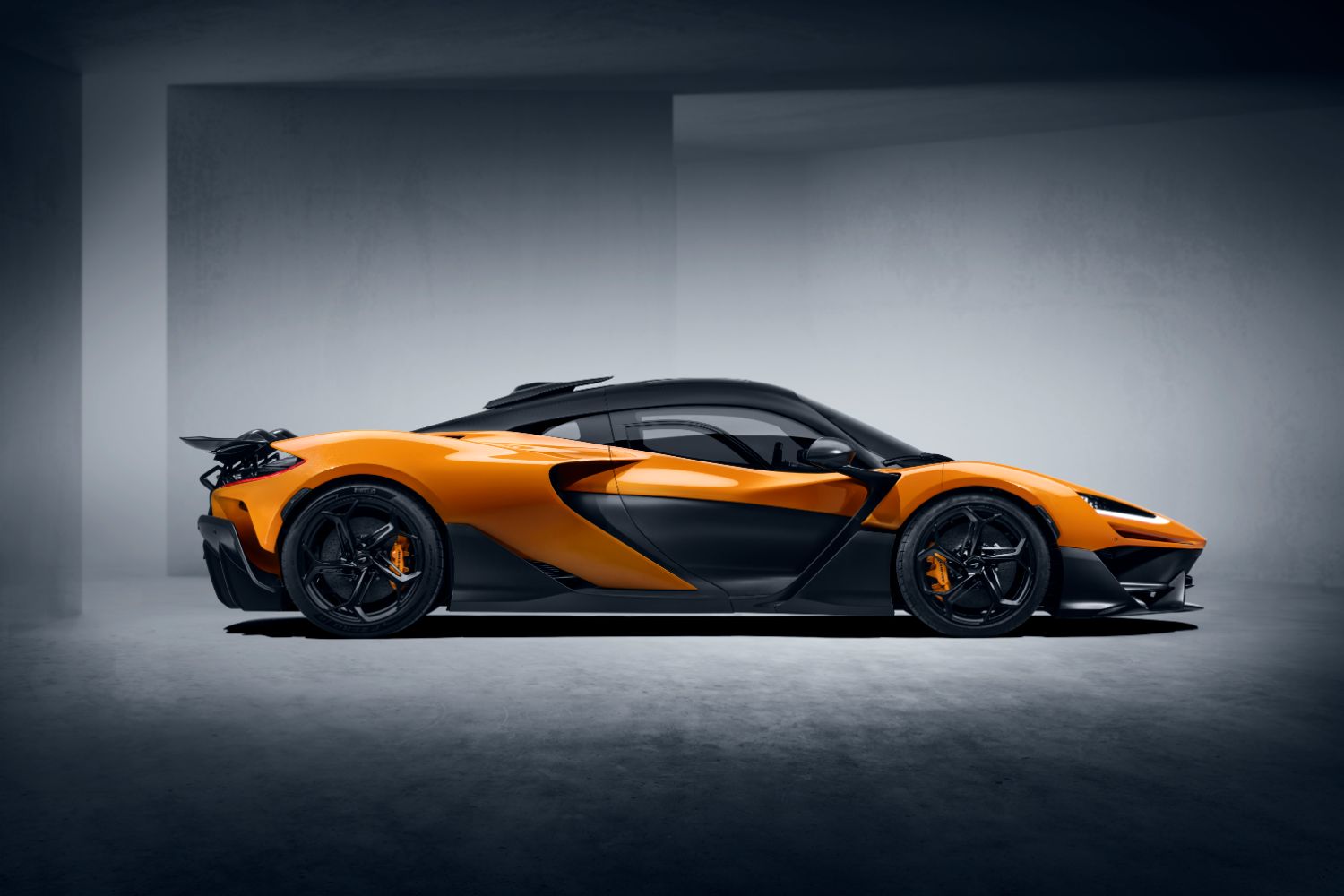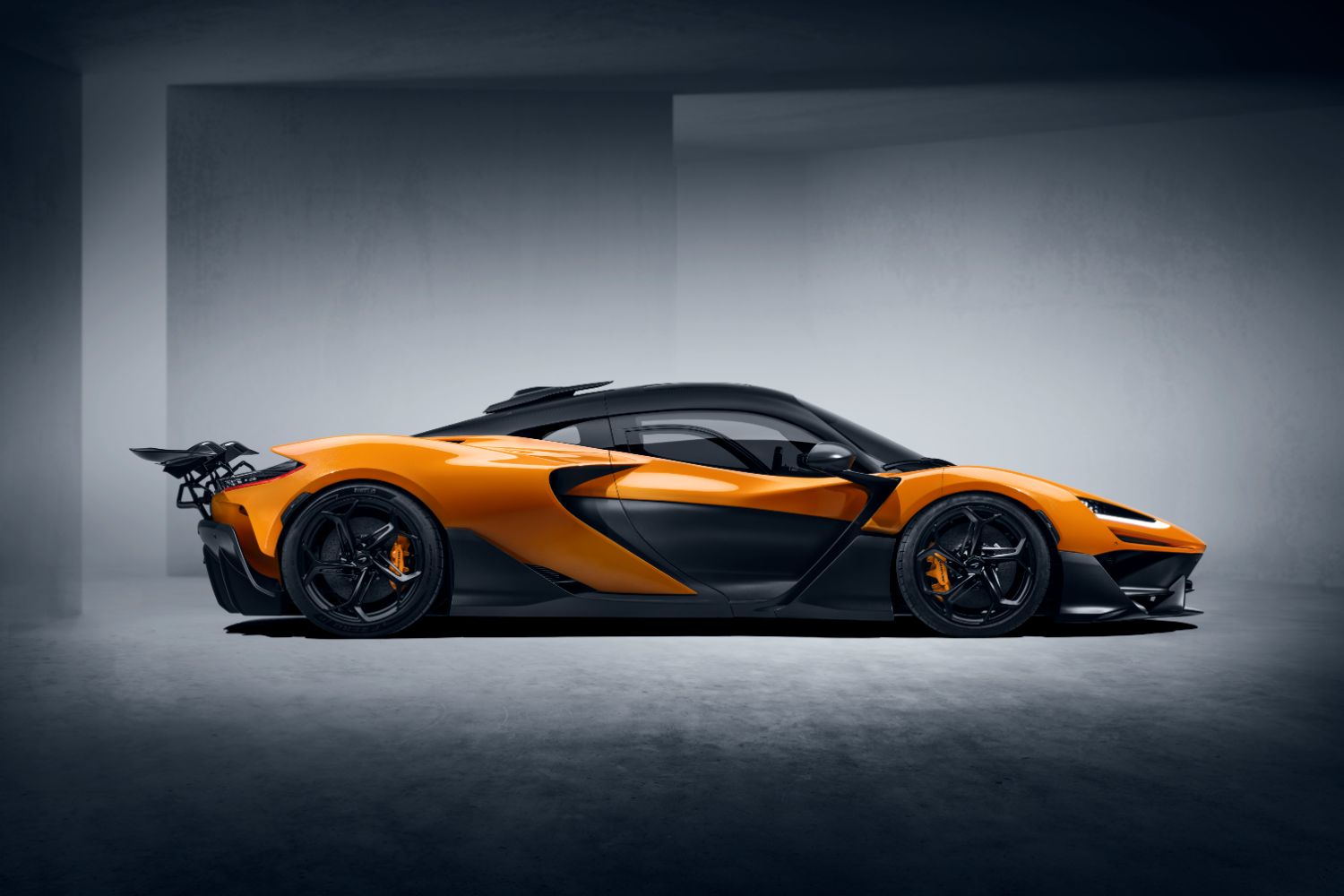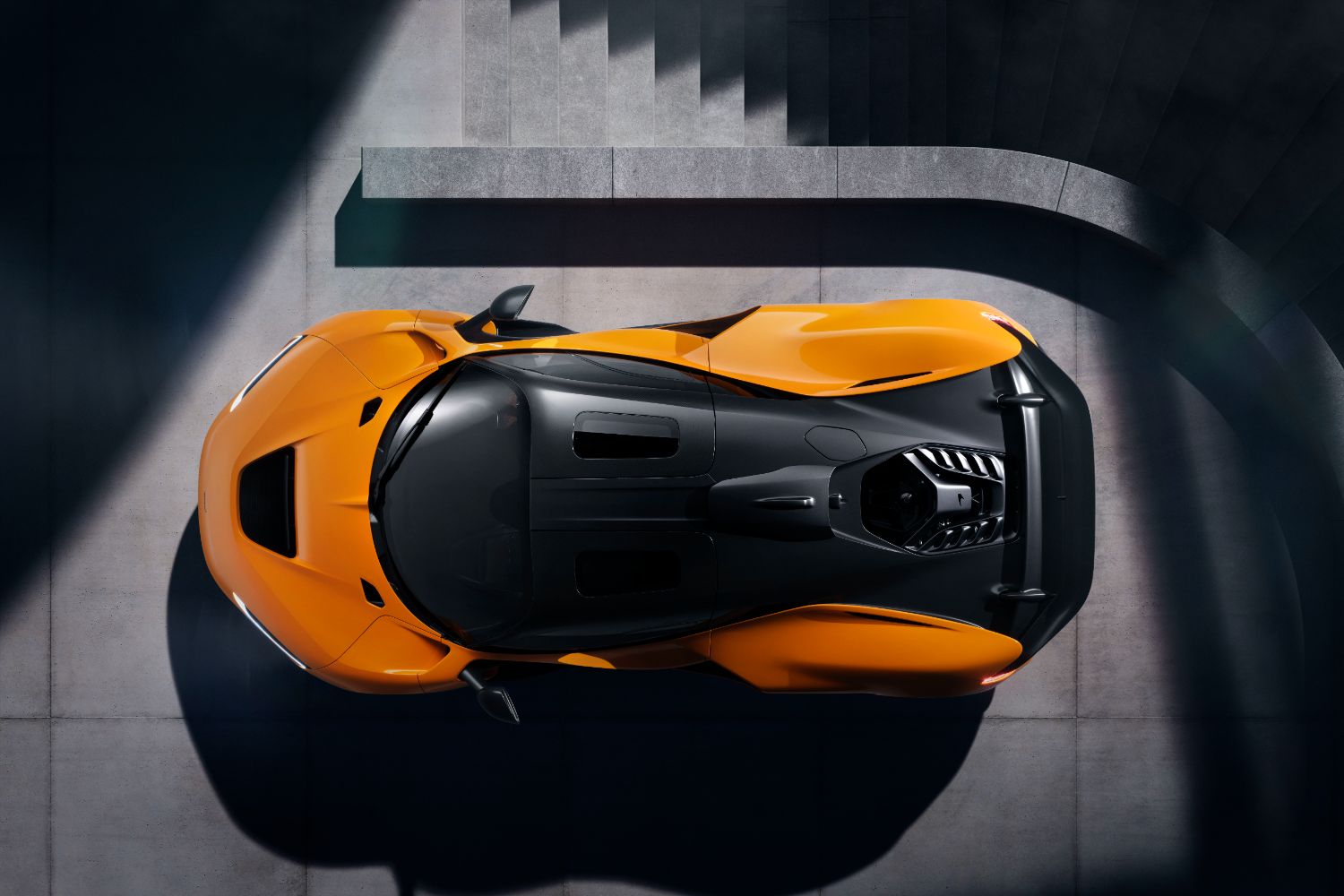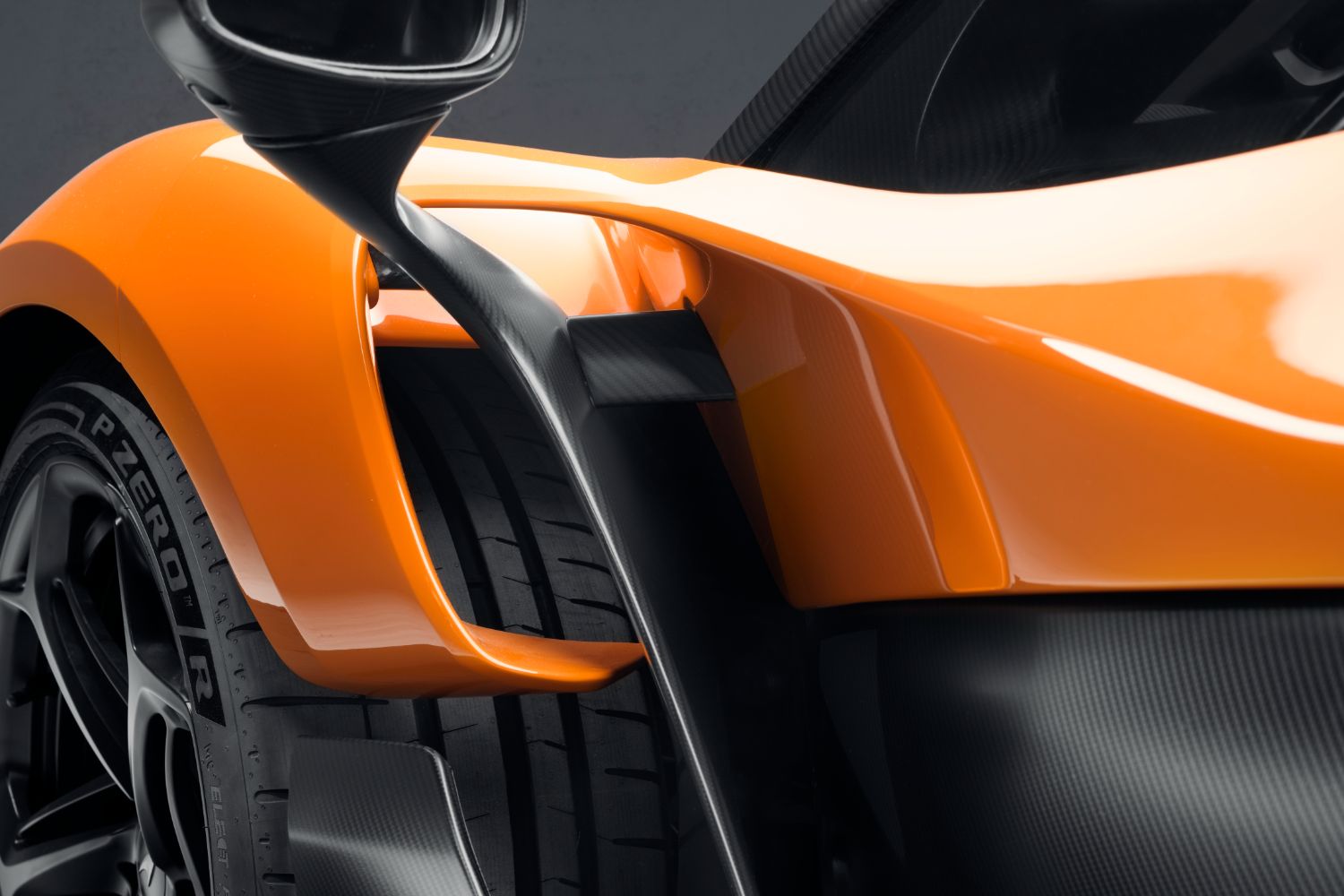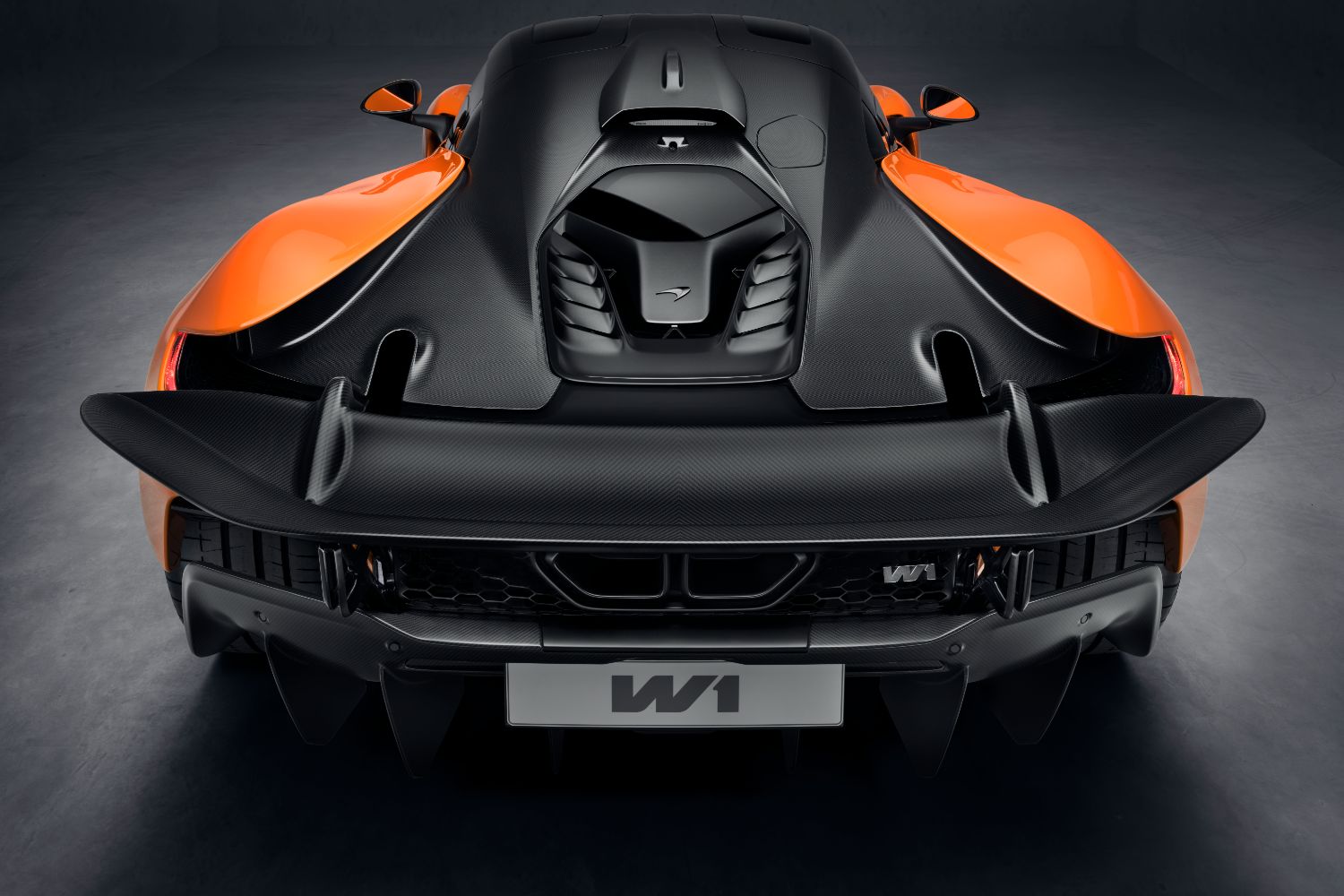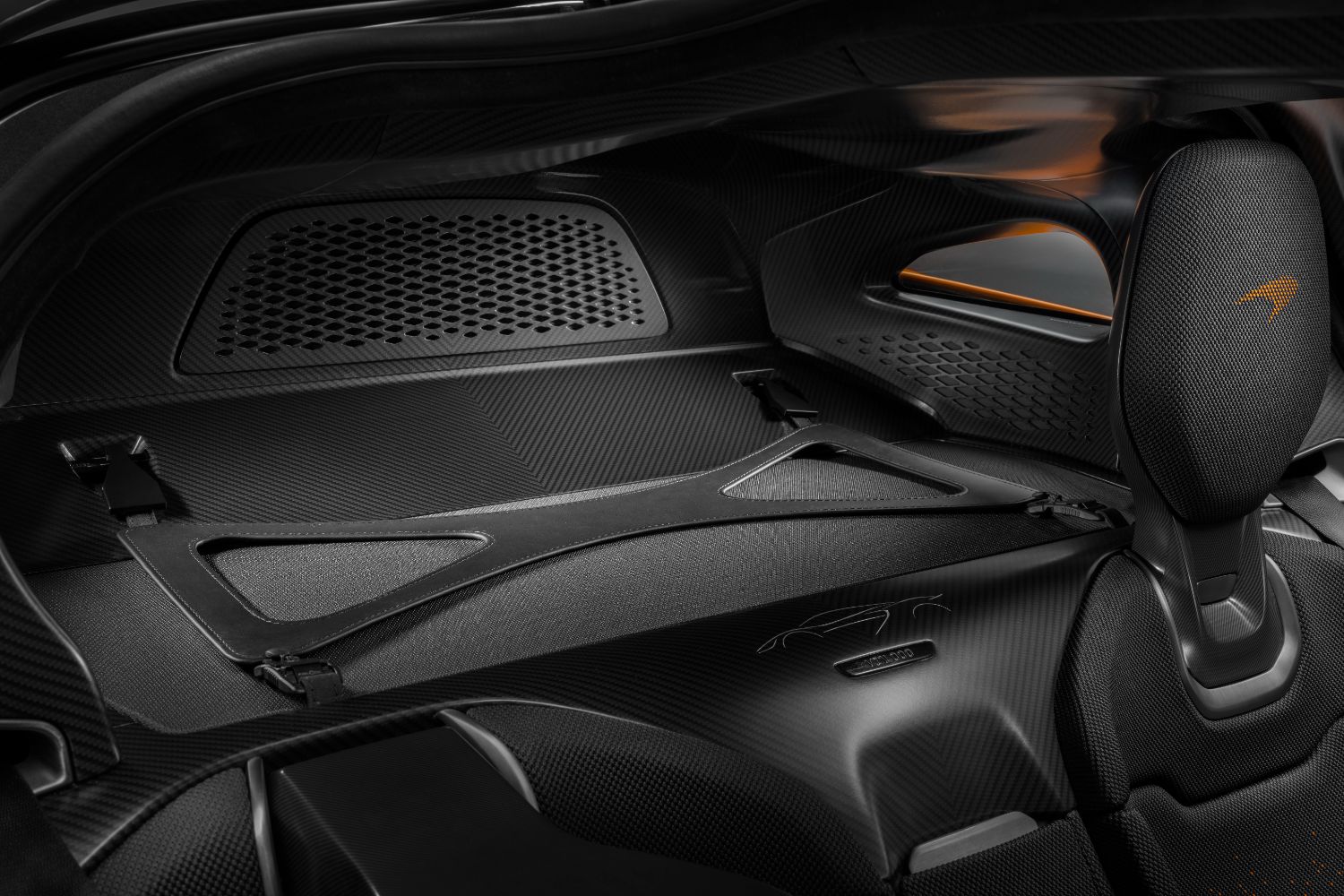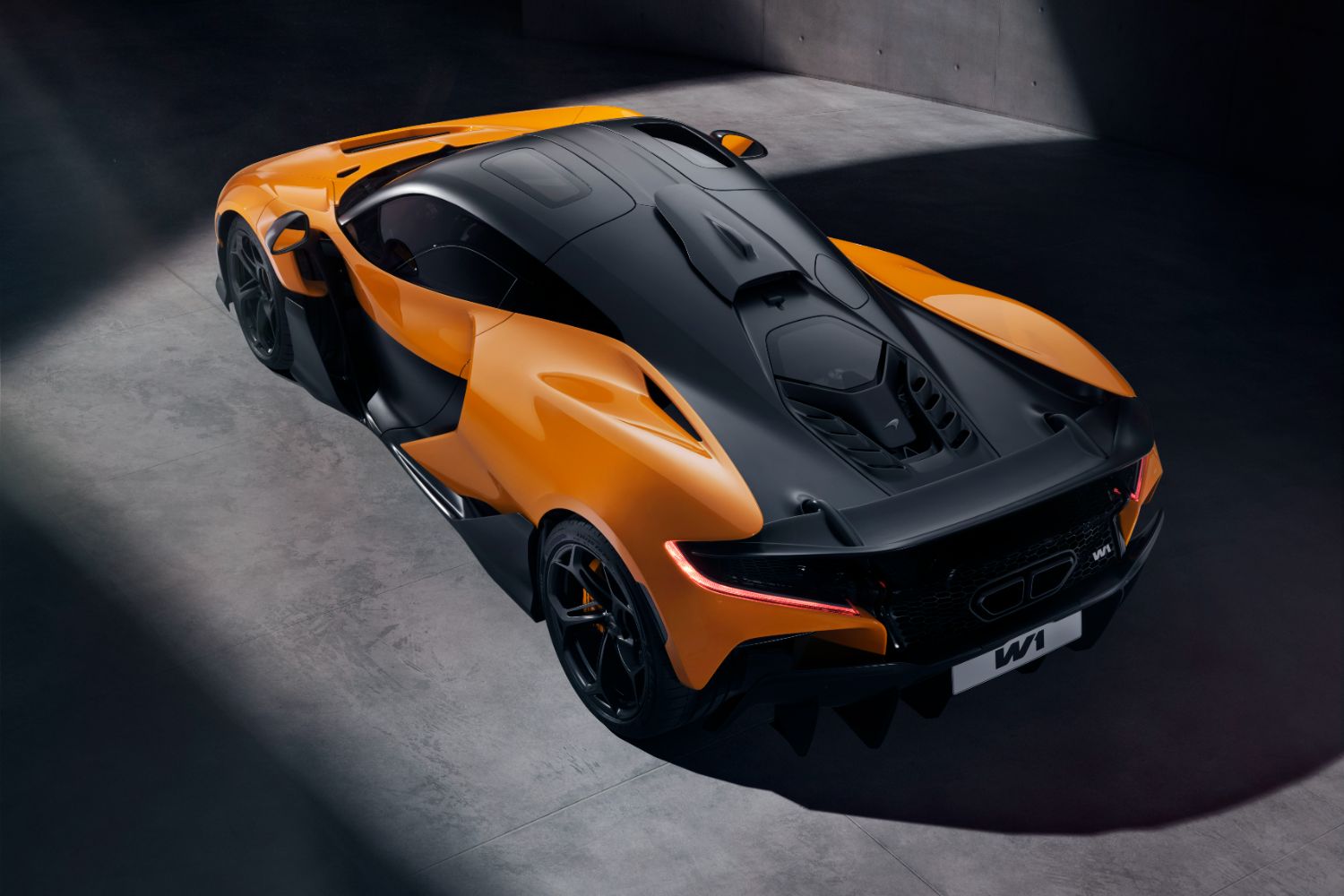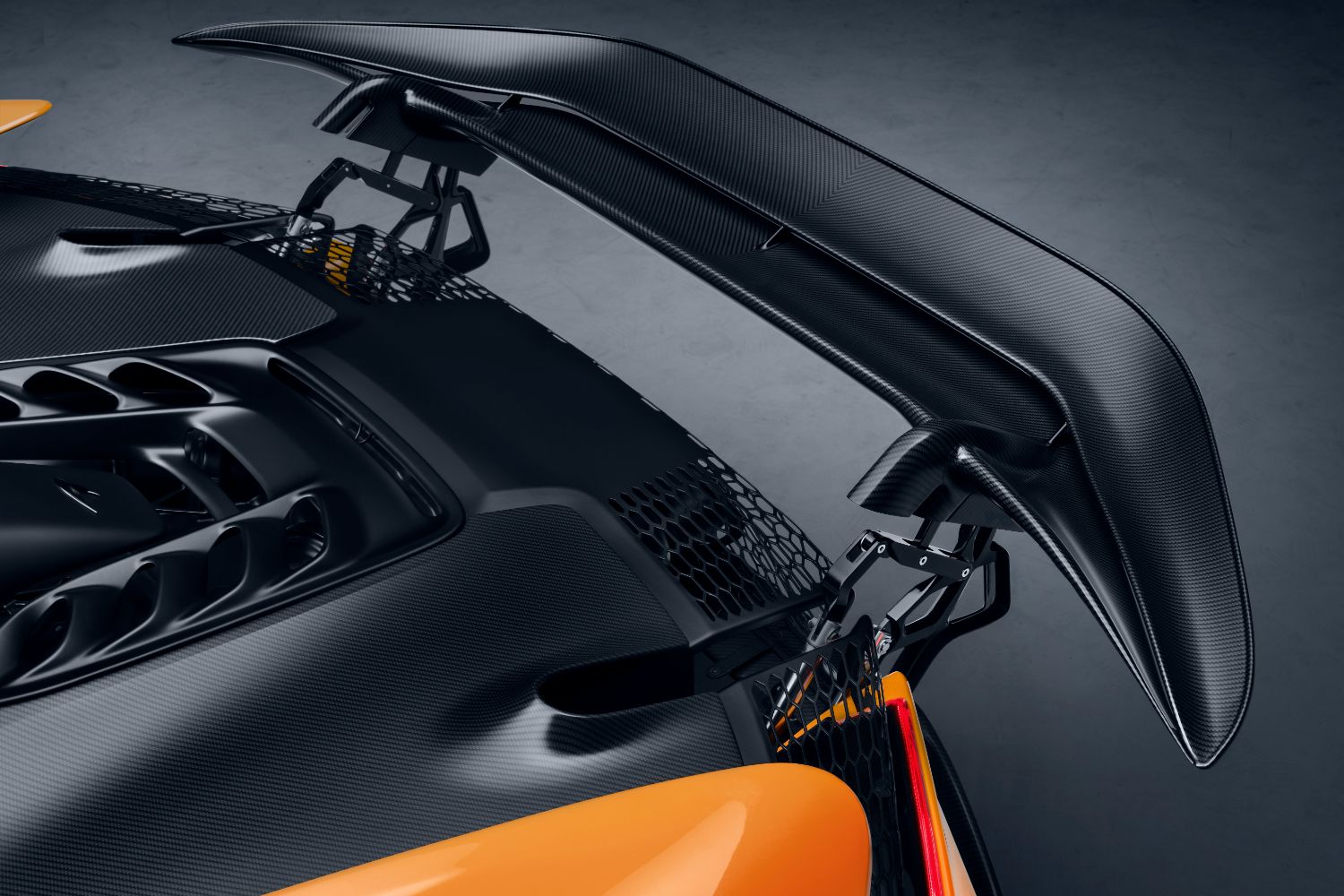McLaren has rewritten the supercar rulebook twice already. Once, in 1992, with its original Gordon Murray-designed F1, the car that arguably first broke through the boundaries of the supercar genus and established the age of the hypercar. And then again in 2013, with the launch of the remarkable plug-in hybrid P1, with its 976hp powertrain.
Resetting the hypercar clock?
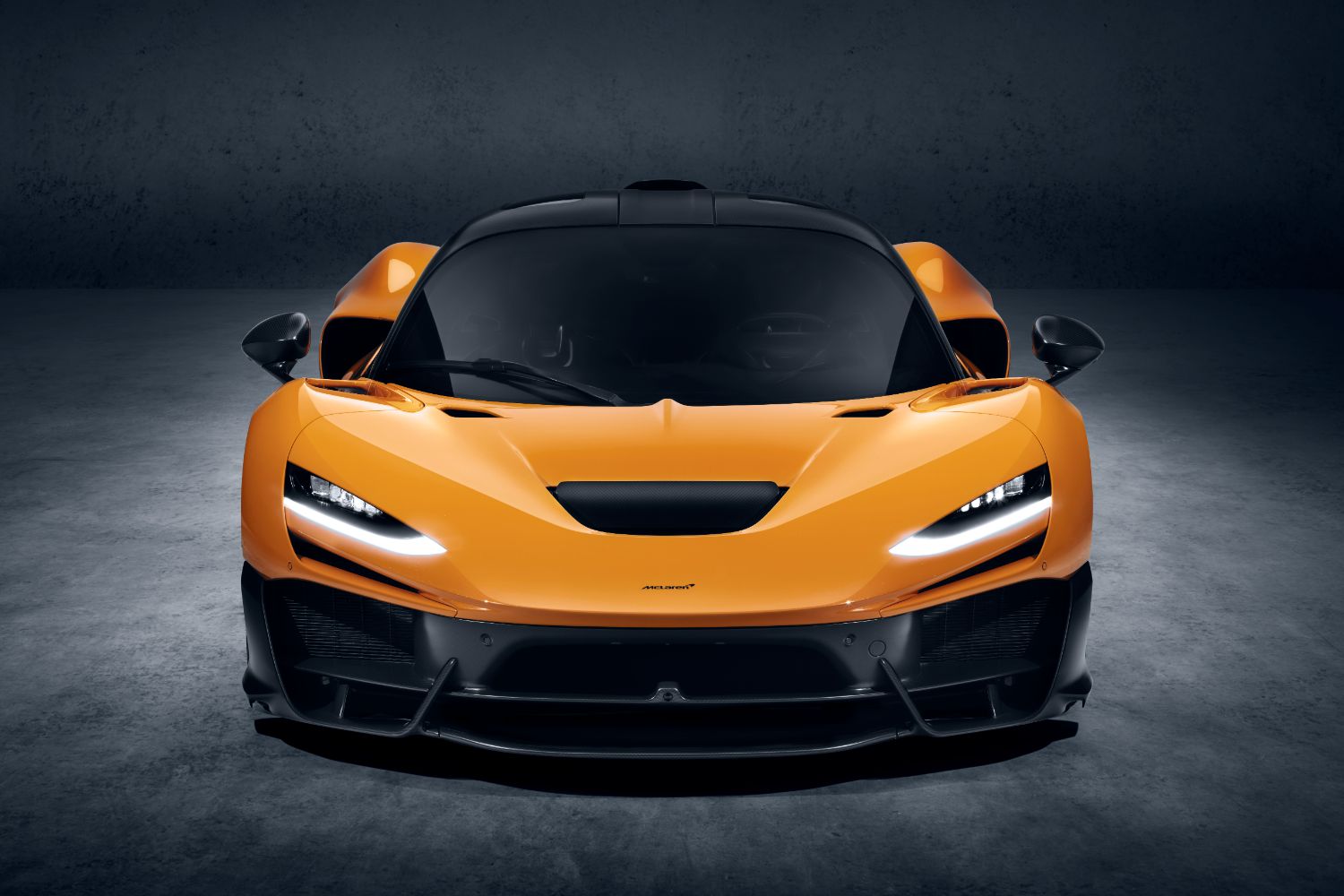
Will this new W1 reset the hypercar clock? It may well do, not least because it’s packing 1,275hp from a combination of V8 turbo and battery-powered hybrid power. That’s far from the highest output in the hypercar world - both the all-electric Lotus Evija and Rimac Nevera have much more - but the McLaren’s trump card could be its weight. At 1,399kg it’s 300kg lighter than a current Renault Megane, but with almost six times the power.
The V8 engine - code-numbered MHP-8 V8 - is said by McLaren to be all-new, and it’s coupled to an eight-speed gearbox which does without a reverse gear, instead using the hybrid’s electric motor when you need to back up. That motor is a radial flux unit, and it develops 347hp all by itself, with the V8 chiming in with the lion’s share of the total power, 928hp.
The combo of (relatively) light weight and (relatively) massive power output means that the McLaren W1 has an (unequivocally) exceptional power-to-weight ratio of 911hp per tonne. That’s the highest per-tonne figure for any road-going McLaren, and the company reckons that it’s a best-in-class figure.
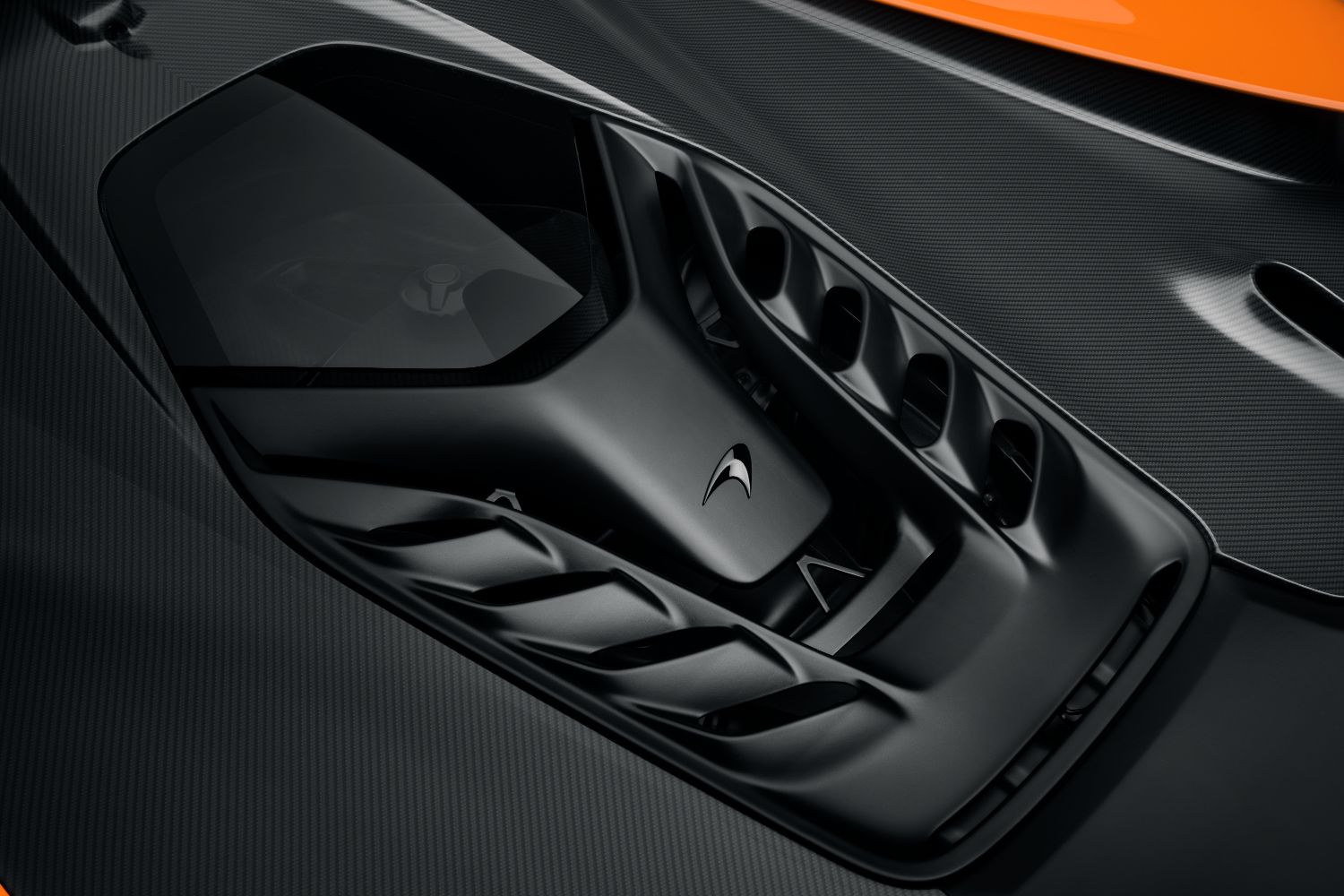
If you thought the power was impressive, wait till you see the torque - all 1,340Nm of it. It’s enough to shove this low-slung car to 100km/h in just 2.7 seconds, to 200km/h in 5.8 seconds, and all the way to 300km/h in just 12.7 seconds. The maximum speed is limited to 350km/h, so at the very top end, a 1990s F1 would actually outrun the W1.
McLaren isn’t shirking on the engine tech front - the new V8 engine uses a flat plane crank 90-degree design, with twin twin-scroll turbos, a lightweight block, cylinder heads and pistons in aluminium, and plasma-sprayed cylinder liners.
The engine’s petrol is directly injected at 350 bar pressure, and the V8 produces a massive 233hp per litre.
Electric motor with F1 and Indycar provenance
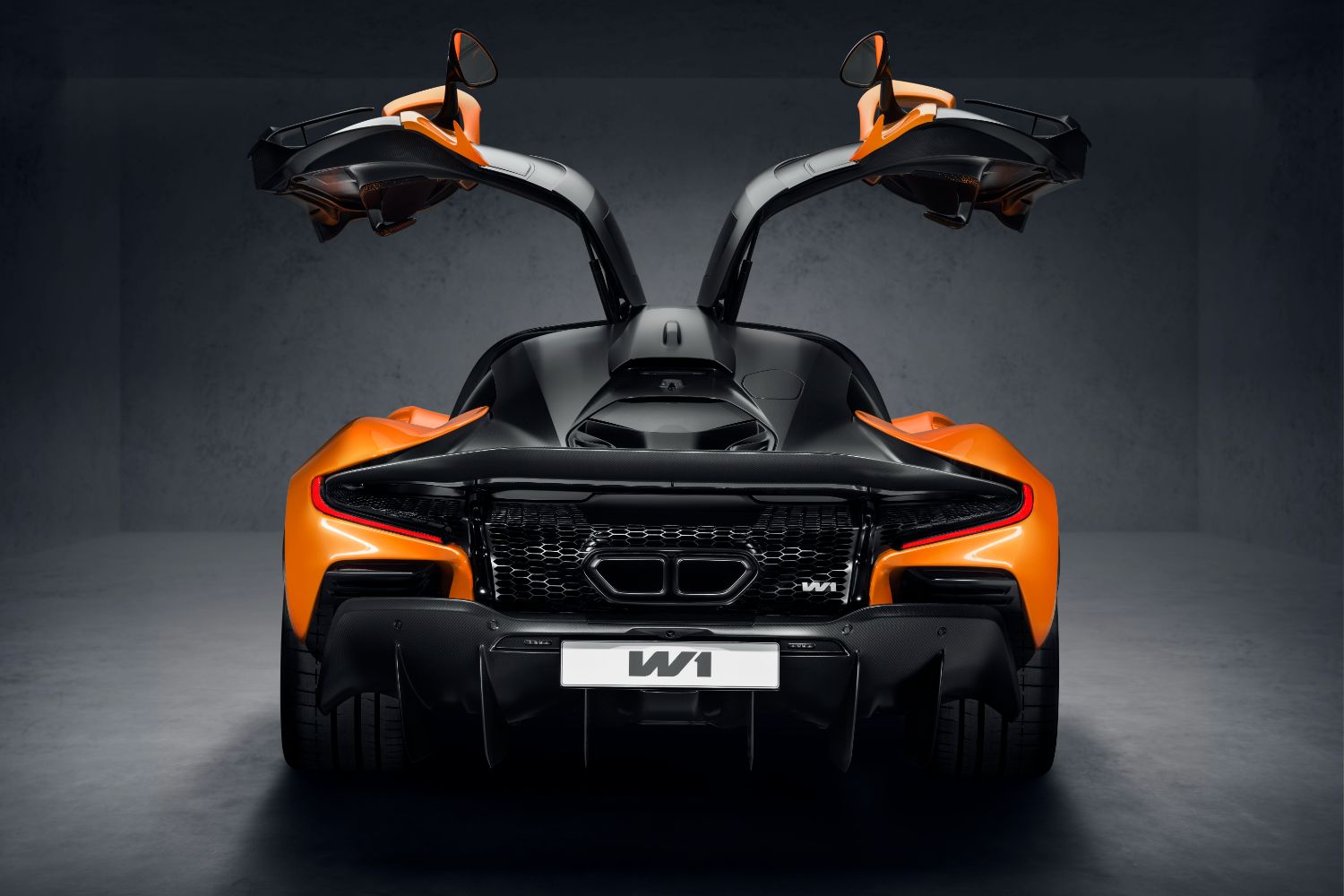
The electric motor is integrated with its own motor control unit, a trick McLaren has learned from its recent experience in Indycar racing. That means that the whole motor unit can be small and light - just 20kg - while its 23hp per kg power-to-weight figure is, says McLaren, directly comparable to the electric motor used in its F1 cars.
Spinning at up to 24,000rpm, that electric motor draws its power from a 1.384kWh (McLaren likes to be three-decimal-places accurate about such things) battery is enclosed on a structural carbon fibre floor housed within a cavity in the carbon fibre chassis, mounted down as low as possible so as to keep the centre of gravity as low equally low as possible.
Unlike the P1, the W1 isn’t a plug-in hybrid, but the compact battery can store enough energy to, in theory, propel the car for up to 2km. Not much, but in focusing more on performance than on energy storage, McLaren says that it has been able to reduce the hybrid system’s weight, compared to that of the P1, by 40kg. It helps that the hybrid system acts as the engine’s starter, and also runs ancillary systems such as the air conditioning. The battery management system ensures that there’s always at least a minimum charge kept in the battery to power such things.
This being a McLaren, aero performance is as much to the fore as engine and hybrid performance, and the W1 actually uses ground effect aerodynamics, where air is channelled at high speed under the car, creating low pressure, effectively sucking the car down to the road or track. Obviously, that is inspired by both current F1 tech and the original ground-effect Formula One cars of the late seventies and early eighties, but it’s also drawing on McLaren’s experience with the 1967 championship-winning McLaren M6A Can-Am racecar, which employed ground-effect aerodynamics with great success an entire decade before the technology came to Formula 1.
No seats equals better aero
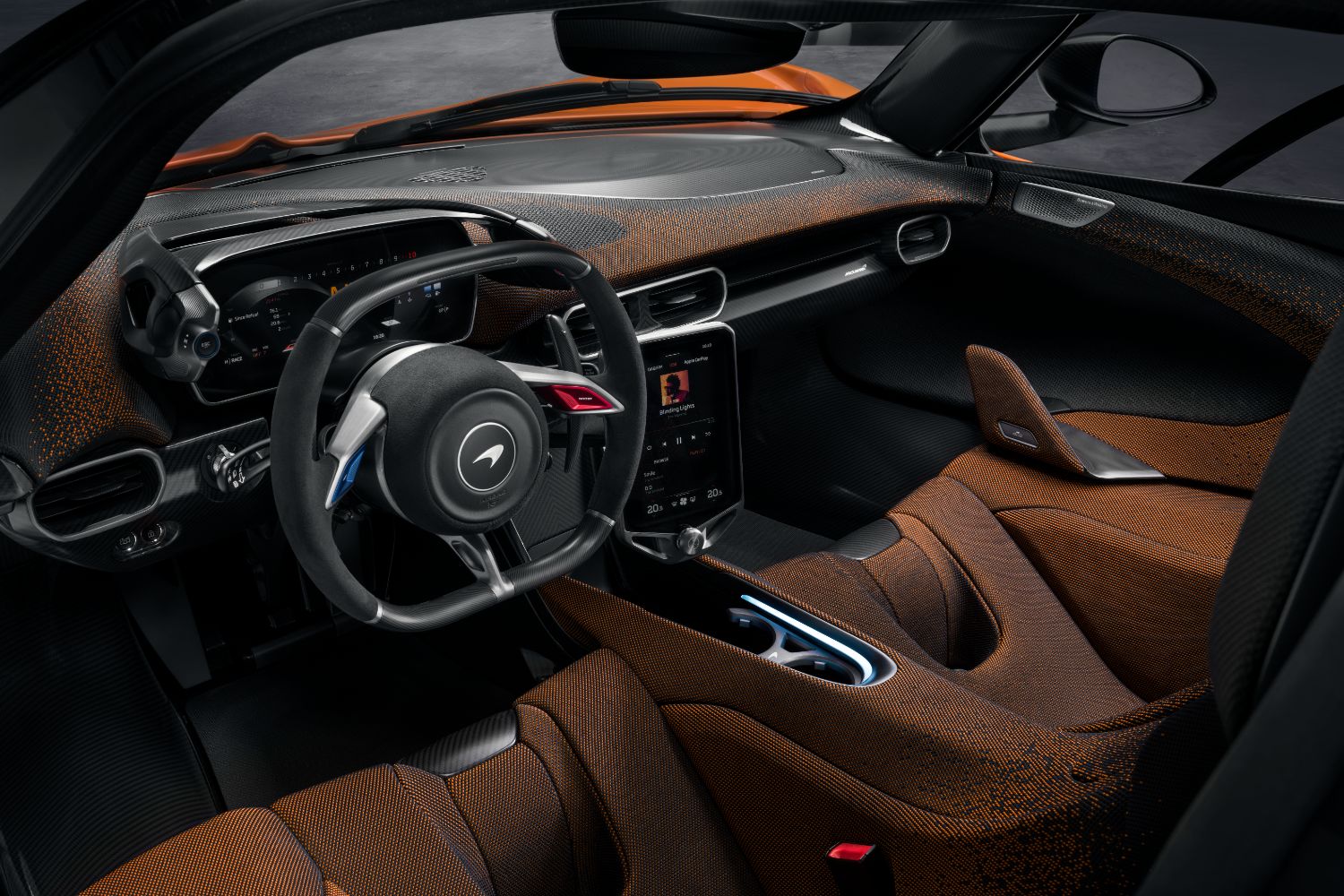
The entire monocoque has been aerodynamically optimised, and the car has spent more than 350 hours in the wind tunnel. So aero-focused is the design, that the interior of the W1 does without seats, instead simply adding cushioning to a shaped floor, which saved 70mm of room that could otherwise be dedicated to aero. Because the structure also includes raised footwells with an adjustable pedal box and steering to ensure the optimum driving position, McLaren has actually dubbed the cabin section of the W1 as the ‘Aerocell.’
The focus on aero has also led to McLaren’s first use of roof-hinged ‘gullwing’ doors, which McLaren refers to as ‘anhedral’ doors. Their shape, and the small window openings, mean that airflow from the front wheel arches can be more effectively ducted into the high-temperature radiators, providing extra cooling space that allows the size of the radiators required to cool the powertrain to be reduced, optimising packaging and saving weight. The shape of the door has also been designed so that it looks a little like the side bodywork of the current MCL38 Grand Prix car.
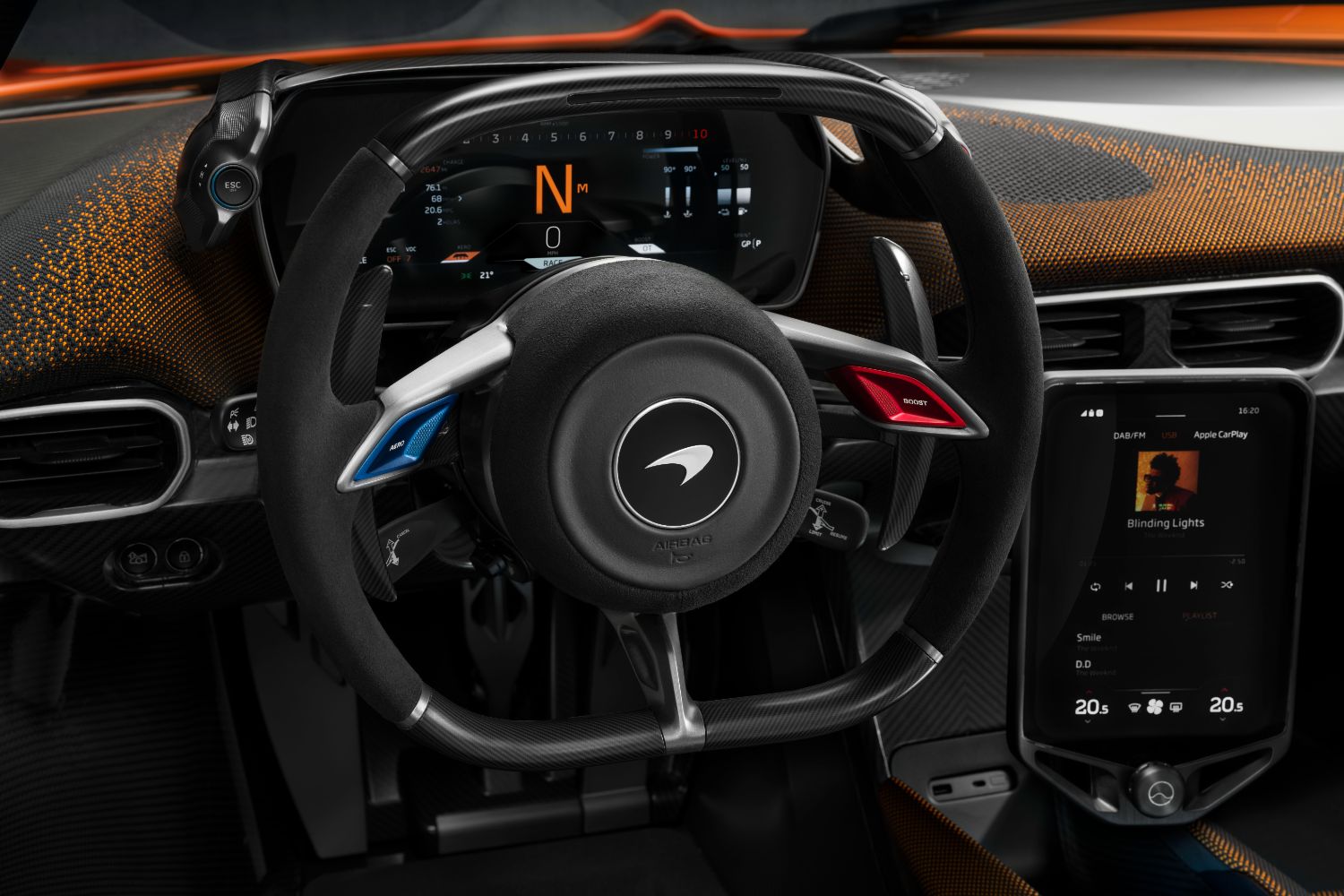
Even the engine has made way for aero, with the powertrain being tilted by three degrees to make space for the massive rear diffuser. The adjustable suspension plays its part too, as when you select ‘Race’ mode the suspension drops by 37mm at the front and 17mm at the rear, which means the W1 is capable of generating up to 350kg of downforce at the front and 650kg at the rear, giving total downforce of up to 1,000kg in high-speed corners.
The W1 is also a ‘Long Tail’ - a McLaren name dating back to the racing F1 GTR cars of the nineties - but this one features a fully mobile ‘Active Long Tail’ wing, which moves up and down, but also forwards and backwards by as much as 300mm, working with the rear diffuser, and also acting as an air brake under heavy braking.
Mobile front wing
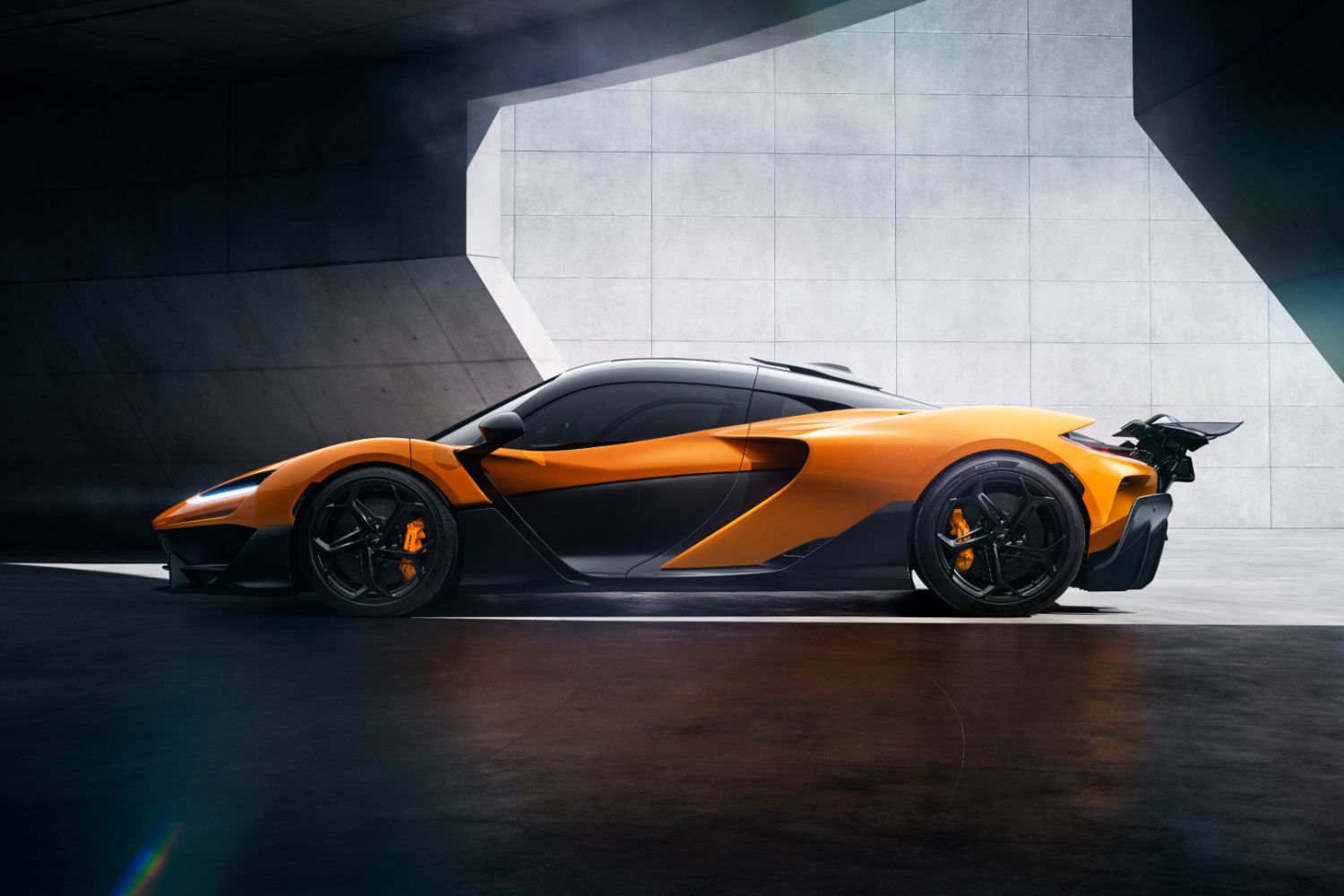
There’s also a mobile front wing, which swings through an arc to create a full-width lower frontal area, feeding air under the car in Race mode via a Formula 1-style T-tray and keel. That front wing automatically tucks itself up at slower speeds, so that you don’t bash it on a speed bump.
The suspension, called McLaren Race Active Chassis Control III, uses titanium torsion bars and an active heave element crosslink, while the rear has a Z-bar with active droplinks to control heave. 3D printing was used for the front uprights and wishbones. You can choose from Race or Race+ settings for the suspension, depending on whether you want extra smoothness over bumps, or harder settings for maximum aero performance. Powertrain options in Race mode are a ‘GP’ setting for consistency over a longer track session, or ‘Sprint’ for maximum performance and E-module deployment over one lap. Two buttons on the steering wheel, ergonomically positioned within easy reach of the driver’s thumbs, give the driver further options: ‘Boost’ instantly deploys full E-module power available - the same principle as employed in Formula 1 - to give the driver everything for overtaking on track or additional speed out of corners as desired. This can be combined with the Aero button for an on-demand Drag Reduction System (DRS) effect from the rear McLaren Active Long Tail wing.
The steering uses hydraulic assistance, not electric power, for better feel and feedback, while the brakes are massive 390mm McLaren Carbon Ceramic Racing+ which are unique to the W1. They use monobloc six-piston callipers at the front, and four-piston callipers at the rear. The discs get an extra layer of ceramic coating which McLaren says provides greater durability while allowing for a more aggressive brake pad and higher friction levels to further increase braking efficiency. To keep these brakes cool on track days, there are F1-style ducts to send cooling air straight to the discs.
Faster than a Senna
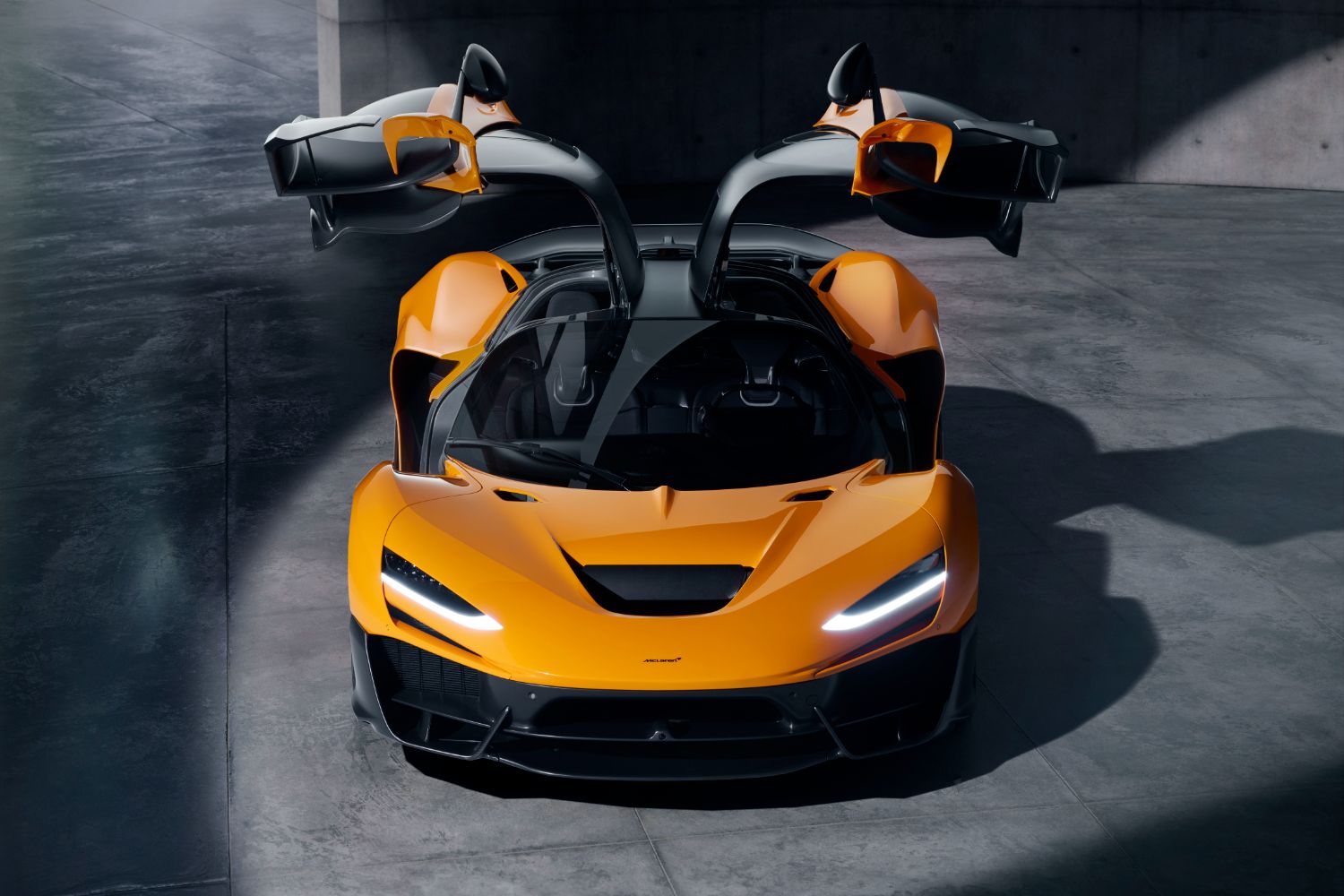
As well as being the fastest-accelerating McLaren ever, the W1 has also trounced even the mighty McLaren Senna on-track at Nardo in Italy, beating the Senna’s time by three full seconds. For track work, Pirelli has developed special P-Zero Trofeo RS tyres for the W1, while there are also road-focused P-Zero R and winter P-Zero Winter2 options.
As mentioned, the driving environment is seriously focused. There are no separate seats, and the driver and passenger effectively sit on the chassis itself. Extra glazing in the rear three-quarters and optional windows in the upper sections of the gullwing doors maximise cabin light, while carbon-fibre sun visors, just 3 mm thick, keep the light out.
The steering wheel is smaller and flatter than previous McLaren steering wheel designs, and features built-in shift lights to prompt you to pull the upshift lever at the engine’s 9,200rpm redline. That wheel has only two buttons - one for Boost electric power, and the other for tweaking the aero settings. Stereo controls on the wheel? McLaren doesn’t believe in them… The pedals are floor-mounted, made of aluminium, and fully adjustable.
The digital instrument panel is fixed to the steering column and moves with the wheel, and the surround has integrated rocker switches which control most of the car’s major functions. The design of the instrument panel even doubles as a duct for the air conditioning system - nothing goes to waste in here.
Fighter jet
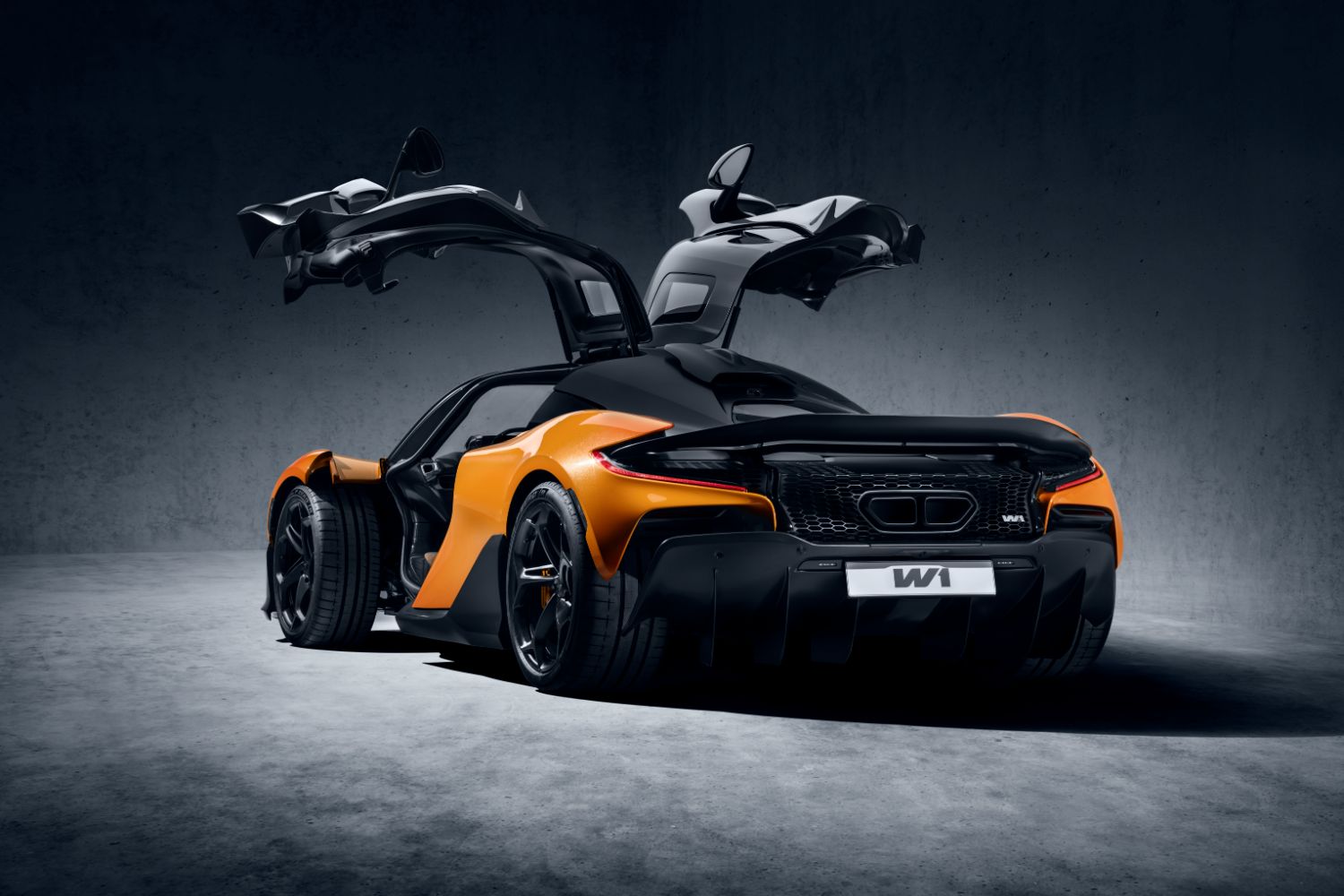
For maximum theatrics, switches for the engine stop/start, gear selection, and the Race mode switch are all in the roof, fighter-jet style. There’s also a digital rear view mirror, and a compact eight-inch infotainment touchscreen mounted between the driver and passenger. There is some luggage and storage space in the W1, but only a mere 117 litres, so pack light.
The interior trim is made of a material called McLaren InnoKnit, which is designed to be knitted together precisely to fit the interior panels, ensuring that nothing is wasted.
Style-wise, the W1 sticks closely to the recent McLaren styling template, but with a ‘layered’ design that in this show car runs from black at the bottom to Papaya Orange at the top - just like the Grand Prix team’s cars. There’s also lower, more ant-eater-like nose than we’ve seen from McLaren of late, and ultra-slim LED headlights.
“The McLaren W1 is a celebration of both the excellence of the iconic McLaren F1 and McLaren P1TM and the manifestation of McLaren’s World Championship mindset. With our new Ultimate supercar, we are again pushing the boundaries of real supercar performance with an epic hybrid powertrain featuring our all-new MHP-8 V8 engine, the most advanced aerodynamic platform of any McLaren road car and extensive use of advanced lightweight materials. This allows us to engineer a supreme track driving experience from the same car that gives unparalleled driving enjoyment on the road.
“Formula 1-derived aerodynamics, pure rear-wheel drive and McLaren hydraulic performance steering showcase McLaren’s approach to purposeful innovation as a racing company that always delivers the best possible performance. It is therefore no surprise that the new W1 is our fastest-lapping and fastest accelerating road-legal car ever. It also provides the purest driver connection by remaining true to the principles that underpin the ultimate supercar driving experience. This really is a car that only McLaren could create” said Michael Leiters, Chief Executive Officer, McLaren Automotive.



